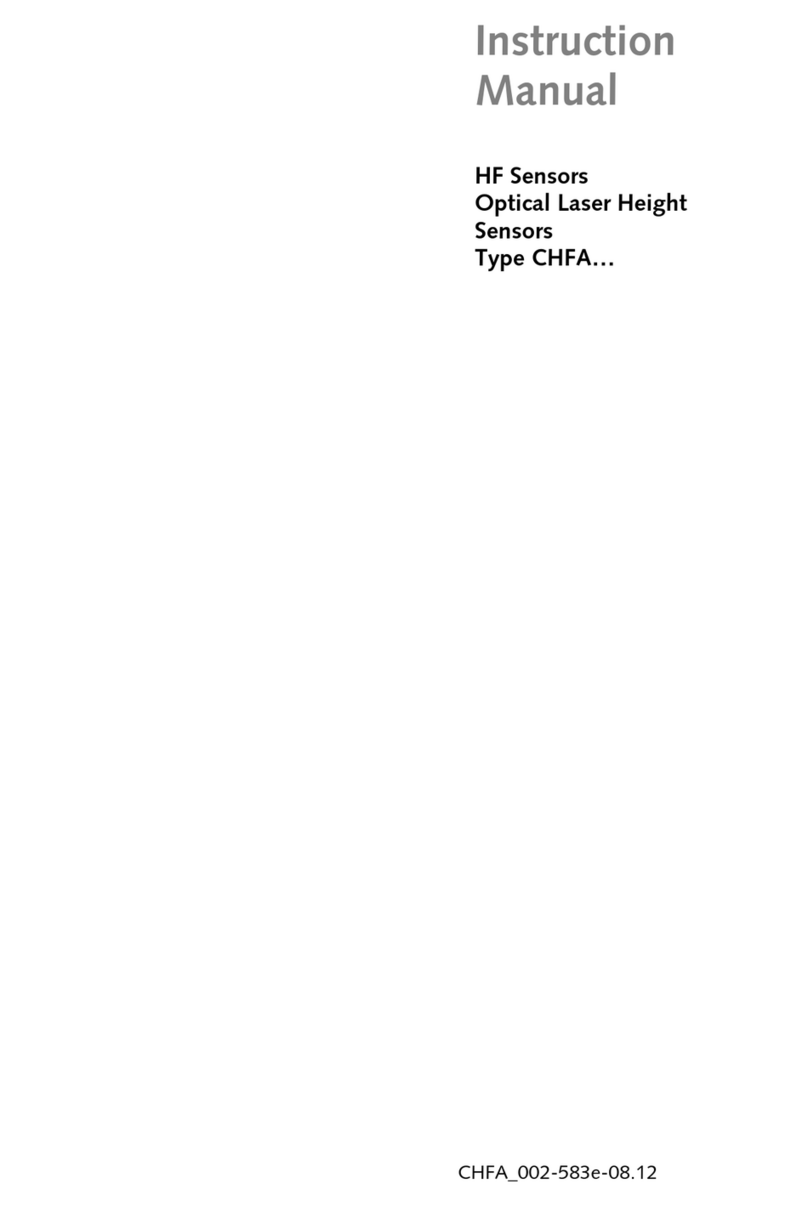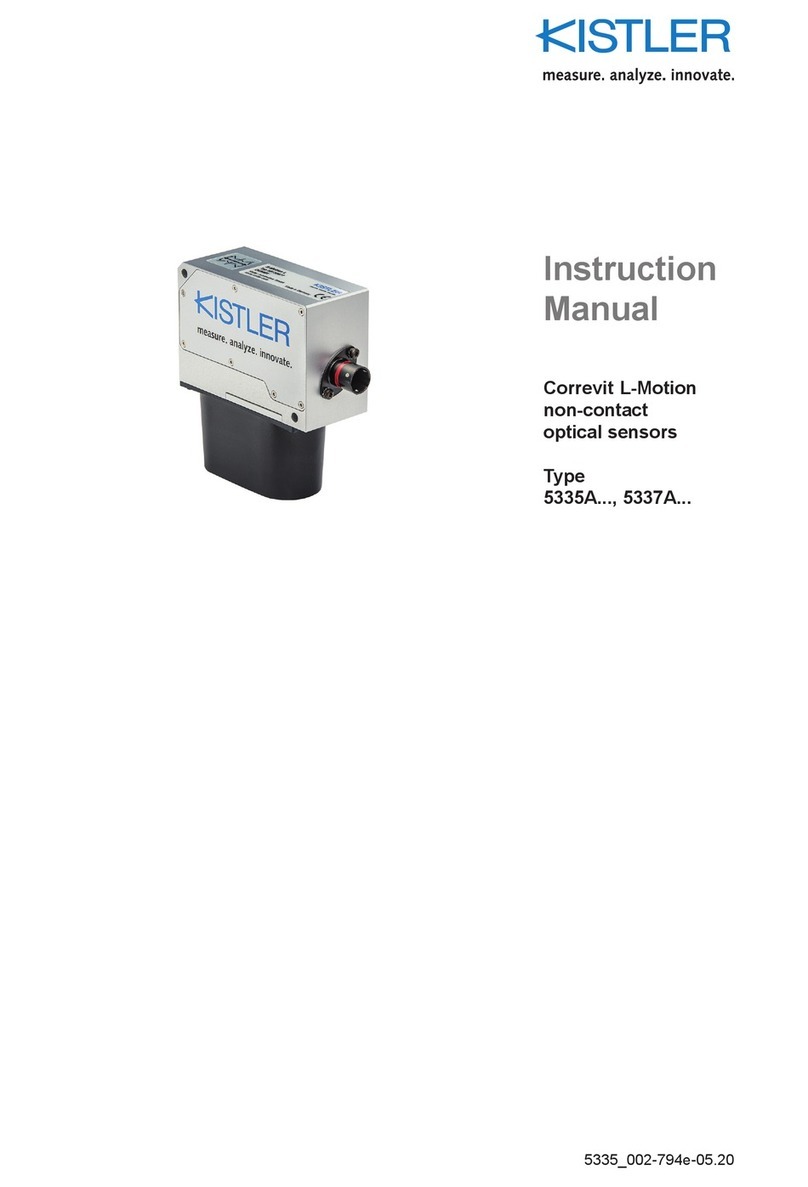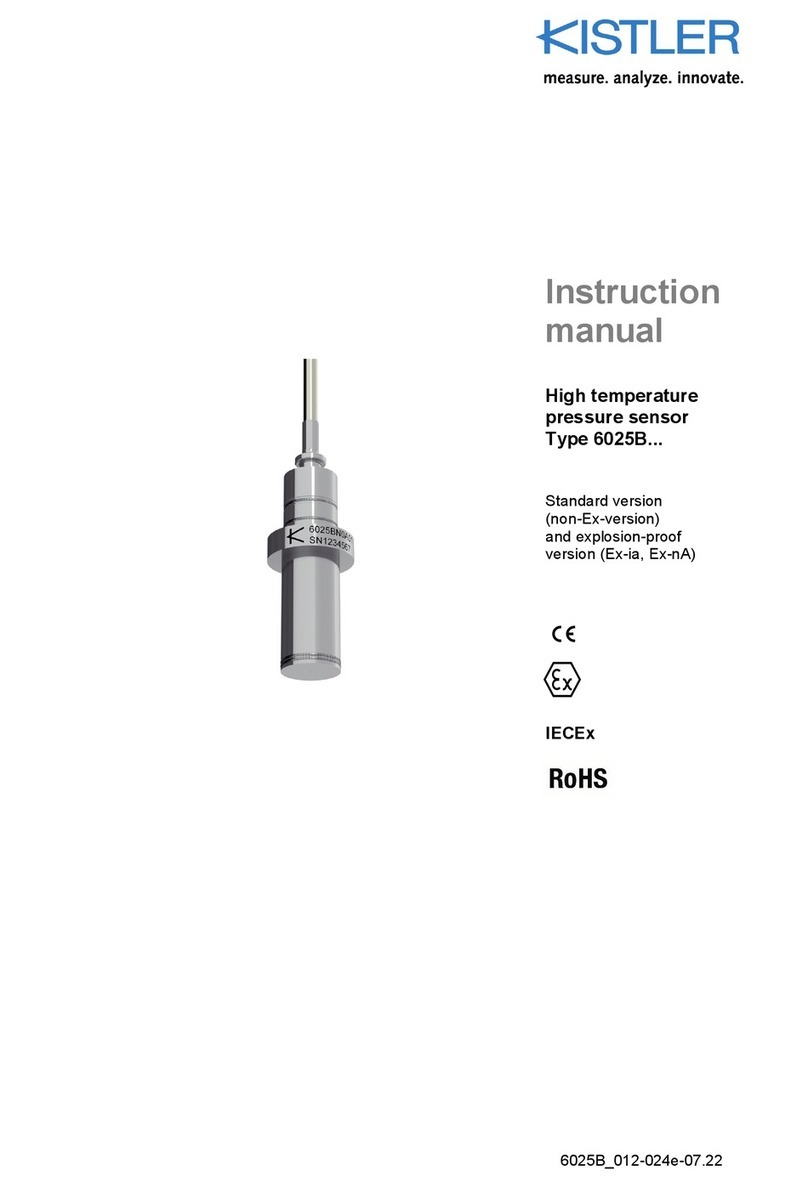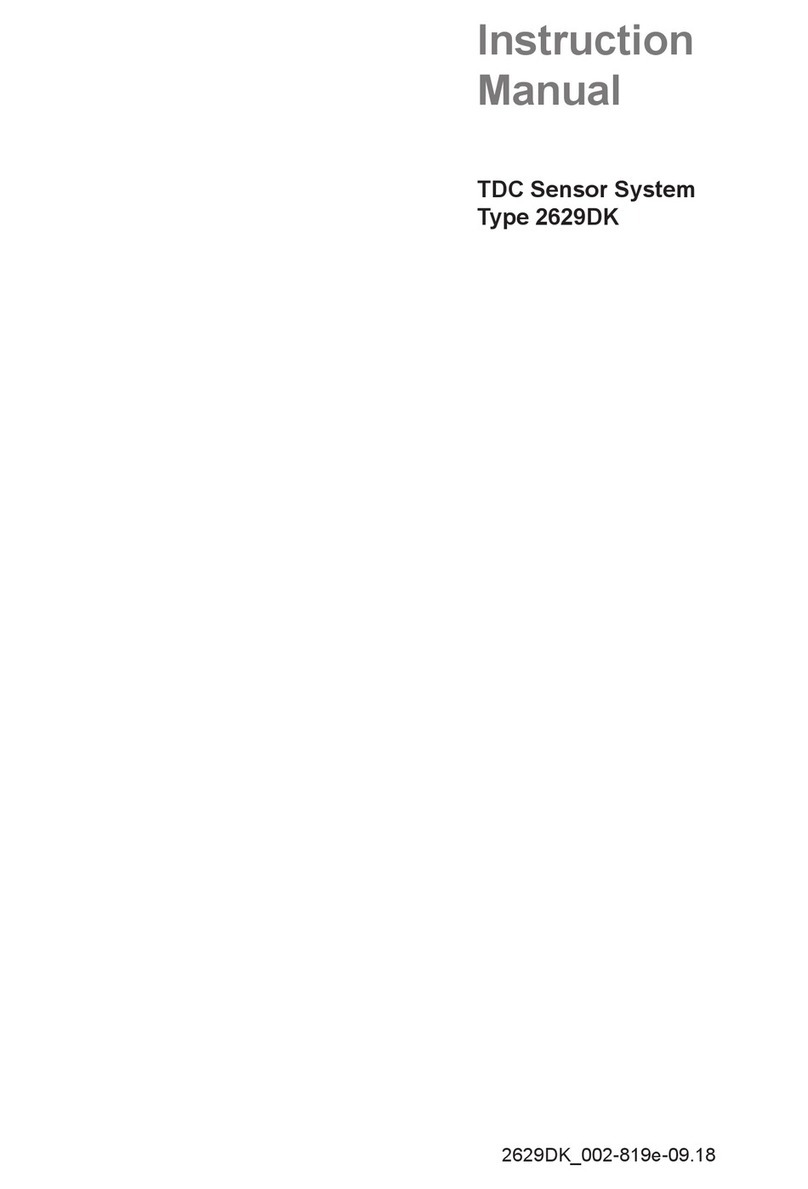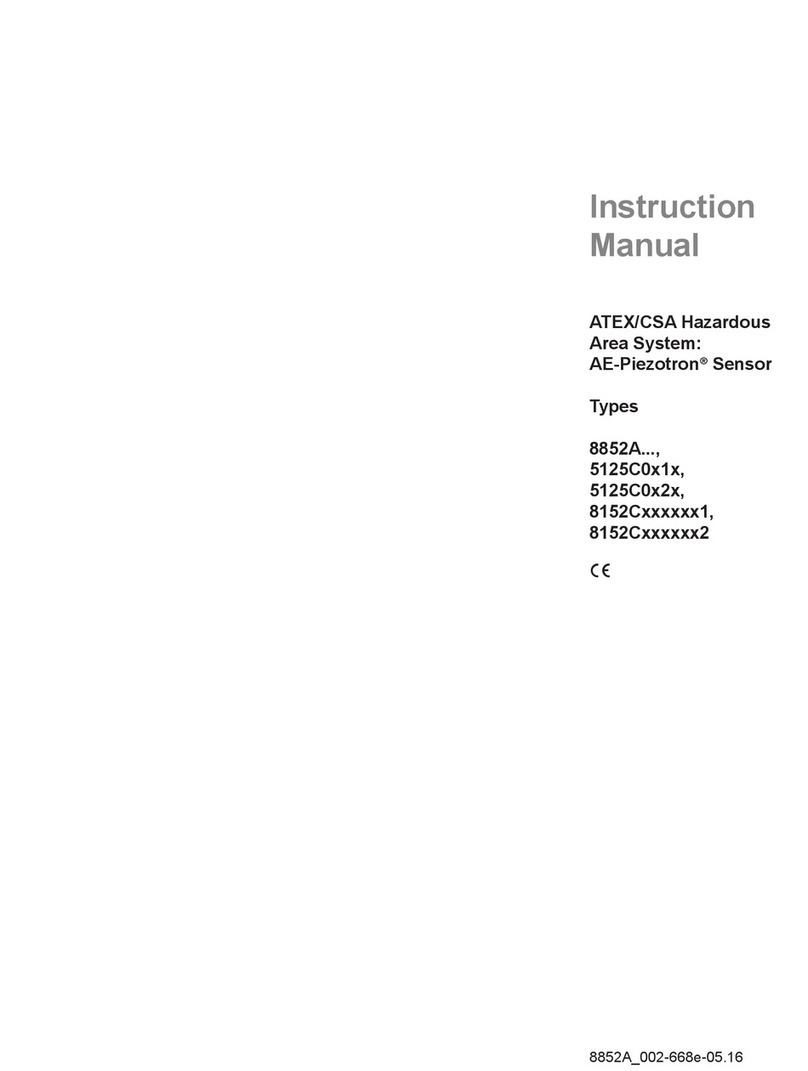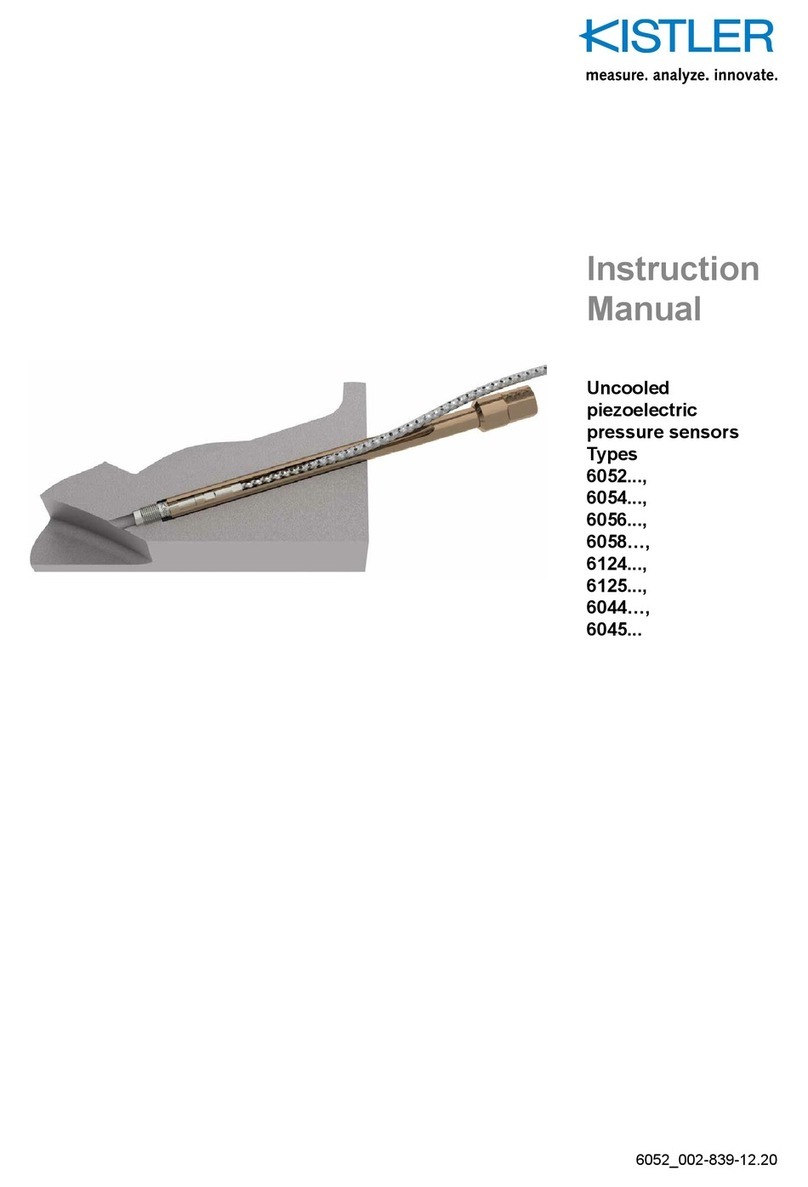
Reaction torque sensors Type 9329A, 9339A, 9349A, 9369A, 9389A
Page 2 9329A_002-267e-12.23
Content
1. Introduction ................................................................................................................................................. 4
2. Important notes........................................................................................................................................... 5
2.1 For your safety................................................................................................................................... 5
2.2 Unpacking.......................................................................................................................................... 6
2.3 Notes on using the reaction torque sensor ........................................................................................ 6
2.4 Hints on using these operating instructions ....................................................................................... 7
3. General description .................................................................................................................................... 8
3.1 What is the purpose of the reaction torque sensor? .......................................................................... 8
3.2 Construction and functional principle of the reaction torque sensor................................................... 9
4. Examples of applications......................................................................................................................... 10
4.1 Calibration of a stationary torque measuring screwdriver................................................................ 10
4.2 Calibration of torque wrenches ........................................................................................................ 11
4.3 Torque testing of potentiometers ..................................................................................................... 12
4.4 Torque testing of ignition switches................................................................................................... 13
5. Installation and startup............................................................................................................................. 14
5.1 Important notes................................................................................................................................ 14
5.2 Installing the reaction torque sensor................................................................................................ 14
5.3 Overview of installation variants ...................................................................................................... 16
5.3.1 Adaptation A: installation in shaft with adapter for shaft journal with pin.......................................... 17
5.3.2 Adaptation B: installation in shaft with adapter flange...................................................................... 19
5.3.3 Adaptation C: installation in shaft with integrated flange.................................................................. 21
5.3.4 Adaptation D: adapter flange for wrenches with external square head............................................ 23
5.3.5 Adaptation E: screw plate with spring assembly.............................................................................. 25
5.3.6 Adaptation F: desktop installation with mounting flange .................................................................. 27
5.4 Basic circuitry and connections for the measuring chain ................................................................. 29
6. Operation................................................................................................................................................... 30
6.1 Charge amplifier settings ................................................................................................................. 30
6.2 Measuring signal polarity ................................................................................................................. 30
6.3 Measuring signal resolution ............................................................................................................. 31
6.4 Quasistatic measurements .............................................................................................................. 31
6.5 Sensitive measurement under high basic load ................................................................................ 32
6.6 Hints for obtaining good measuring results...................................................................................... 34
7. Maintenance .............................................................................................................................................. 35
7.1 Recalibration.................................................................................................................................... 35
7.2 Maintenance work............................................................................................................................ 35
8. Troubleshooting........................................................................................................................................ 36
8.1 Location of faults and remedies....................................................................................................... 36
8.2 Repairing the reaction torque sensor............................................................................................... 36
9. Technical data ........................................................................................................................................... 37
9.1 Reaction torque sensors Type 9329A ... 9389A .............................................................................. 37
9.2 Dimensions reaction torque sensor Type 9329A ... 9389A.............................................................. 38
9.3 Accessories included....................................................................................................................... 39
9.4 Optional accessories ....................................................................................................................... 40






